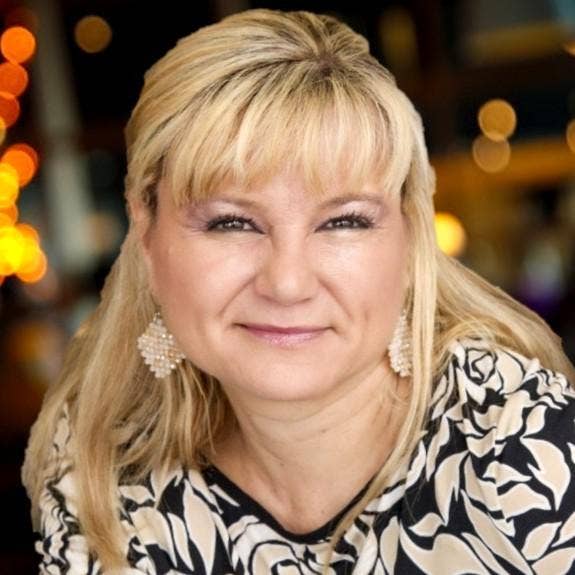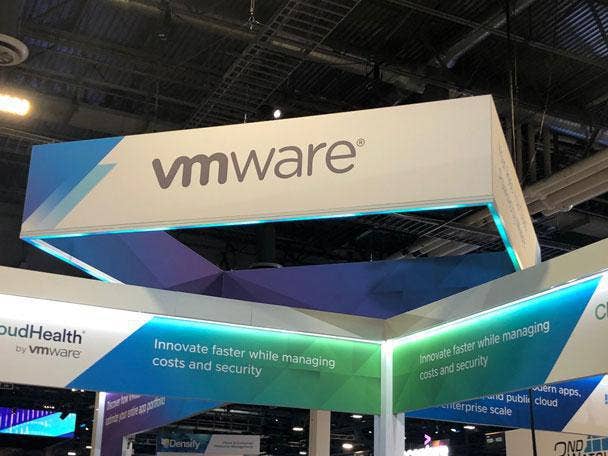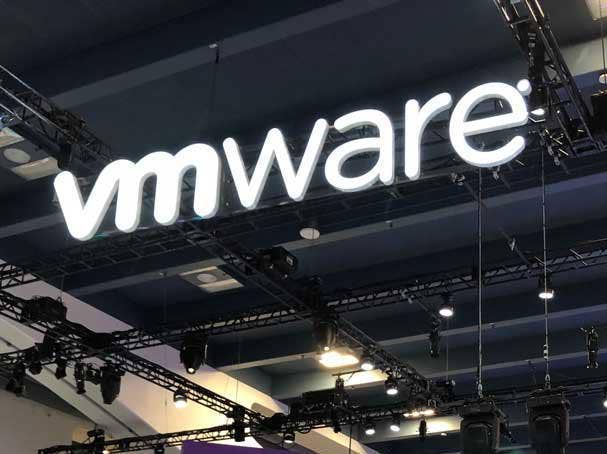VMware Channel VP Vows ‘Our Commitment To Our Partners Hasn’t Changed’
‘Our commitment to our partners hasn’t changed. Our channel. Everything that we committed to at the partner leadership summit, at partner exchange is exactly what we are executing on right now,’ says Tracy-Ann Palmer, vice president of partner experience, programs and distribution at VMware.

Tracy-Ann Palmer, vice president of partner experience, programs and distribution at VMware
The changes to VMware’s reseller program were driven by the idea that more transparency into the program will help partners advance through tiers, while the more those partners focus on building capabilities, the more high-revenue deals get signed.
To that end, VMware is soon launching an online portal that will show partners details about where they stand in the program, where they need to increase performance or capabilities to move up, and it will reflect changes to the partner’s points in real time, said Tracy-Ann Palmer, vice president of partner experience, programs and distribution at VMware.
“Every organization is in it to generate revenue. Well if you don’t know what that looks like, if you don’t know where to go, then you don’t know that,” Palmer said. “We’re going to empower our partners and our channel, giving them the data they need to be successful and to drive the right priorities. Simplicity and operational ease is key. And giving them the visibility so they can see how to be successful.”
[RELATED: VMware’s Partner Commect Program Now Honed By “Thousands” Of Successes]
All of this is happening as chipmaker Broadcom edges closer to aquiring the virtualization leader in a cash-and-stock deal valued at $61 billion. VMware can offer no assurances, however Palmer said the company is still independent and is executing on its promises to partners.
“We’re very confident that we’re doing the right things for our partners. I think no one knows what is going to happen with the acquisition. It may not happen at all. Our stance going forward is we are still an independent company. We’re going to continue on our commitments and priorities and execute as we planned,” Palmer said.
VMware’s program will soon have four business models – solution services, solution reseller, solutions builder, and cloud services provider -- and five tiers with ‘Pinnacle’ now considered the tier for elite partners. Through the dashboard that is being built, partners can see which business model status they’ve earned; which ones they have not earned, and what they need to do to go win that. It will define all the requirements for the partner, VMware said. It will also show partners they’re level status and how many points they’ve earned, what the next level is, and how many points they need for that, and what’s missing for them to get to that next level.
Palmer said a big part of the program will be helping partners win stickiness with their customers.
“There’s no such thing as renewal in a SaaS and subscription world,” Palmer said. “When I think about SaaS and subscription. It is an ongoing relationship and partnership with the customer to drive adoption, consumption, upsell, and renewal. If you wait 90 days to go and renew a subscription, the churn rate is significantly higher.”
Palmer said to create the new program VMware went to their top partners to see how their businesses drove profitability, and then adopted methods to incentivize that behavior among all their resellers.
Here’s more of what Palmer had to say.

The architecture for the new program was driven by this partner survey. Can you tell me what VMware found?
What we discovered was our most strategic, our most profitable partners are doing three things differently: one, they are driving and selling advanced complex services. Not just services. Advanced complex services. Number two, they are focusing on the entire life cycle of the customer, robust customer success methodologies, frameworks, organizations in place, and driving it from resale all the way through. If you speak to any of our top partners, they will tell you that it is that continuum that is really driving the margins. The third piece of the stickiness. How do you keep building and growing the customer and really transforming the customer from a digital transformation perspective?
Part of the changes to the program are meant to focus partners more on building technical skills, is that right?
We are now incorporating all of our certifications our competencies into the program. So not just our MSCs, which is our master services competency, but we‘re now also incorporating some of the specializations. So we’ve just launched our customer success specialization. We are looking at doing our verticals specializations all of that will be incorporated into the programmatic structure where you will receive benefits both for that capability as well as the performance in increasing levels.

You mentioned the Ignite program is going to be a part of this going forward. Will you give us some color around that?
We have a program which we‘ve been running now for four years. It’s called ignite. It‘s a practice development program which helps our partners accelerate throughout the to the cycle, so they’re getting their faster demand gen, pipeline, bookings, through that. It‘s not integrated into our programmatic structure.
The program is going live in March, but the partners will have access to where they stand inside the new tiers before then, correct?
One of the things we’re doing is we’re giving these partners early access to the data. All levels. And they will have an opportunity to know where they are, so prior to the official launch in March, they will know what they need to do to get to a different level. That I think will be very well received by our partners.

Talk about the new incentive structure that you have built into the program structure, if you would please?
Typically incentives have been incorporated in terms of at a certain level, you’re eligible for “this” or if you’re a certain level, you’re eligible for “our big bad program.” That is still available, but now what we’ve done is we said, “If you are a certain level, you will receive programmatic rebate incentives for being at that level based on your capability and performance.”
The executive summary is: we’re moving from an IT-pathways-and-tier-credit model to a complete-use-case-business-model focus.
Secondly, they’re used to tier credits. We’re moving to a point system. The way that works, the big differentiator is tier credits used to only focus on performance. The point system will focus on capability and performance. So they’re now getting points, for everything they do to build up their capabilities.
They want to be in a position where if they are investing in the capabilities, they want to know that’s actually going to stand for something inside the program.

Can you break down a little more detail on what this is going to look like for partners once it is operating here in six months or so.
If you look at how we have broken this out, the points are associated with 90-percent performance, 10 percent capability. That may evolve over time, but for now that’s how we’re leading the way. If you look at what we used to incorporate. We really only used to look at your license and your bookings. We’re now incorporating the lifecycle, which is your deployments, your tech assessments, your PSC’s, all of that is now integrated into the point system. Then on the capabilities side we used to only give benefit for the solution competency and the MSC. We’re now giving benefits for V-cap, the specializations, any of the cloud verified (capabilities).
How do small to midsize partners progress through this new system. Is there a way for them to understand how to move to different categories or tiers?
I think this is really important because partners have to start somewhere. But I think what’s really critical about what we’ve built is we’re building in the ability for them to grow fast.
So if you think about Ignite. We have a white-glove organization that helps them reach these milestone’s. First one is competency, demand gen, pipeline, bookings. We then have things like ‘customer success’ incorporated. But as they’re hitting those milestones, and as they’re investing, we’re actually giving them incentives to hit the milestones. So that’s now built into the program structure.
That’s the acceleration that’s really critical. As you know, a lot of companies have a lot of partners, but the question is how many of those companies are driving business?

I know this is a fraught question and there are a lot of variables in there, but how long can partners expect it to take to progress through the tiers?
“There are a lot of variables in there yes. There’s no such thing as standard, but through Ignite though we have a 12-month program. A company can come in. They have the individuals go through the competencies, and then we’re driving them through the milestones through that 12 months. It is the best way to do it. It is about the sales. We have our own white glove motion to drive them to those milestones, to hit them as fast as possible.
We really want to get our partners into step three, because that’s when they really start making money.
How many of the changes that you are talking about here for the last hour or so are here for the long term?
We made commitments to our ecosystem. We made them last year. We’ve been telling our ecosystem for the last 12 months that we’re on this journey. We’re committed. We’re launching. The big launch will happen in March. No changes to our strategy at all. The second thing I would add is, we are an independent company right now. And our strategy hasn’t changed. Our commitment to our partners hasn’t changed. Our channel. Everything that we committed to at the partner leadership summit, at partner exchange is exactly what we are executing on right now.
We’re very confident that we’re doing the right things for our partners. I think no one knows what is going to happen with the acquisition. It may not happen at all. Our stance going forward is we are still an independent company. We’re going to continue on our commitments and priorities and execute as we planned.

Have you heard any assurances from Broadcom about things like this partner program that you are moving in the right direction? Is Broadcom aware of these changes and do they support these efforts?
They are. And they will be even more so going forward. Yes. But you know, everything that we’ve heard is very positive around our channel from a Broadcom perspective. I think that Broadcom has communicated they’re very interested in learning more. And I think there’s a lot to learn. I think we’ve done some incredible things over the last two years from a transformational perspective. We’re really focused on partner intimacy and driving partner profitability.
I think that’s the key. When you have your business going through the channel, like ours, that’s an extension of your sales team and that’s your multiplier.
So the channel is very important to us.